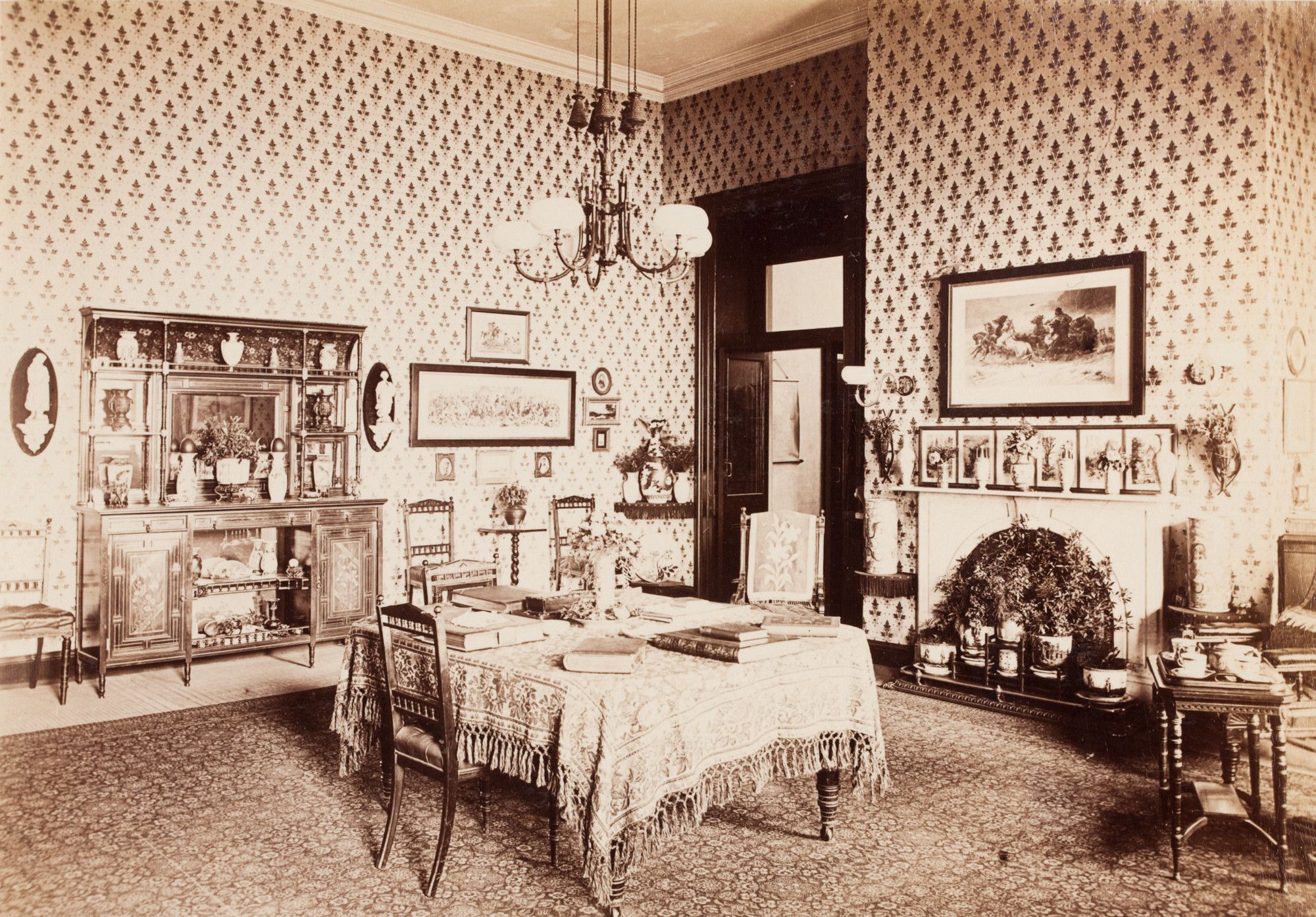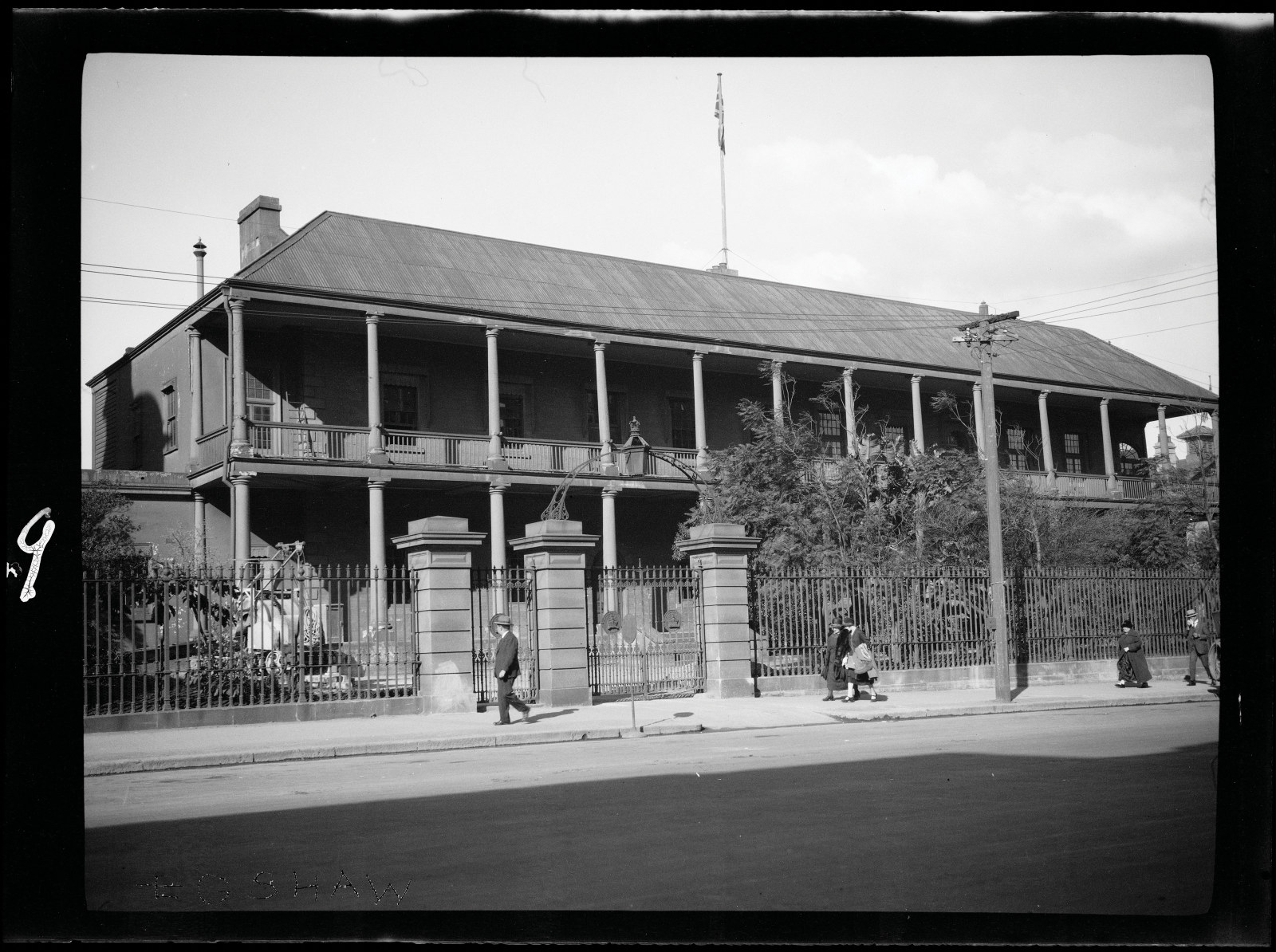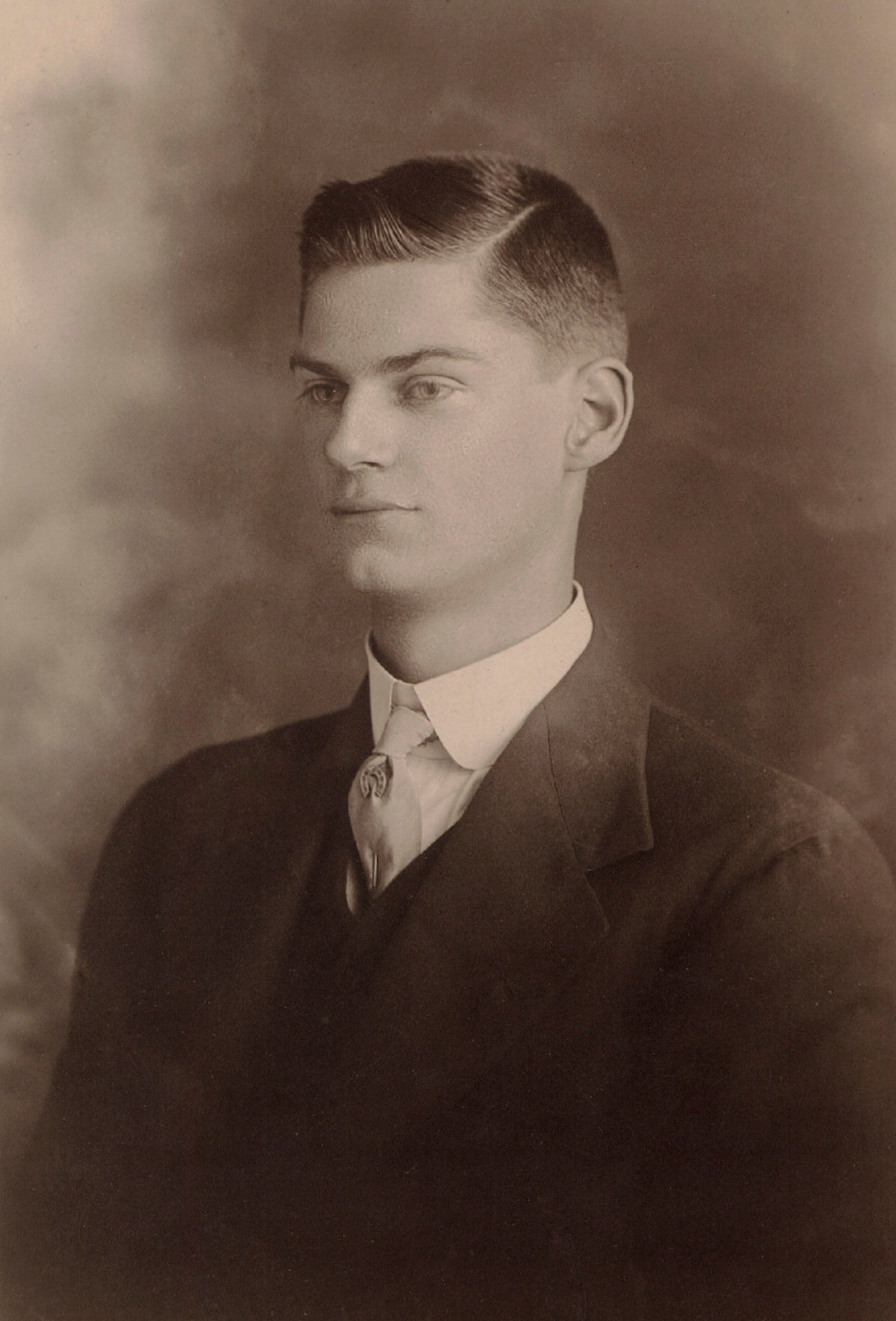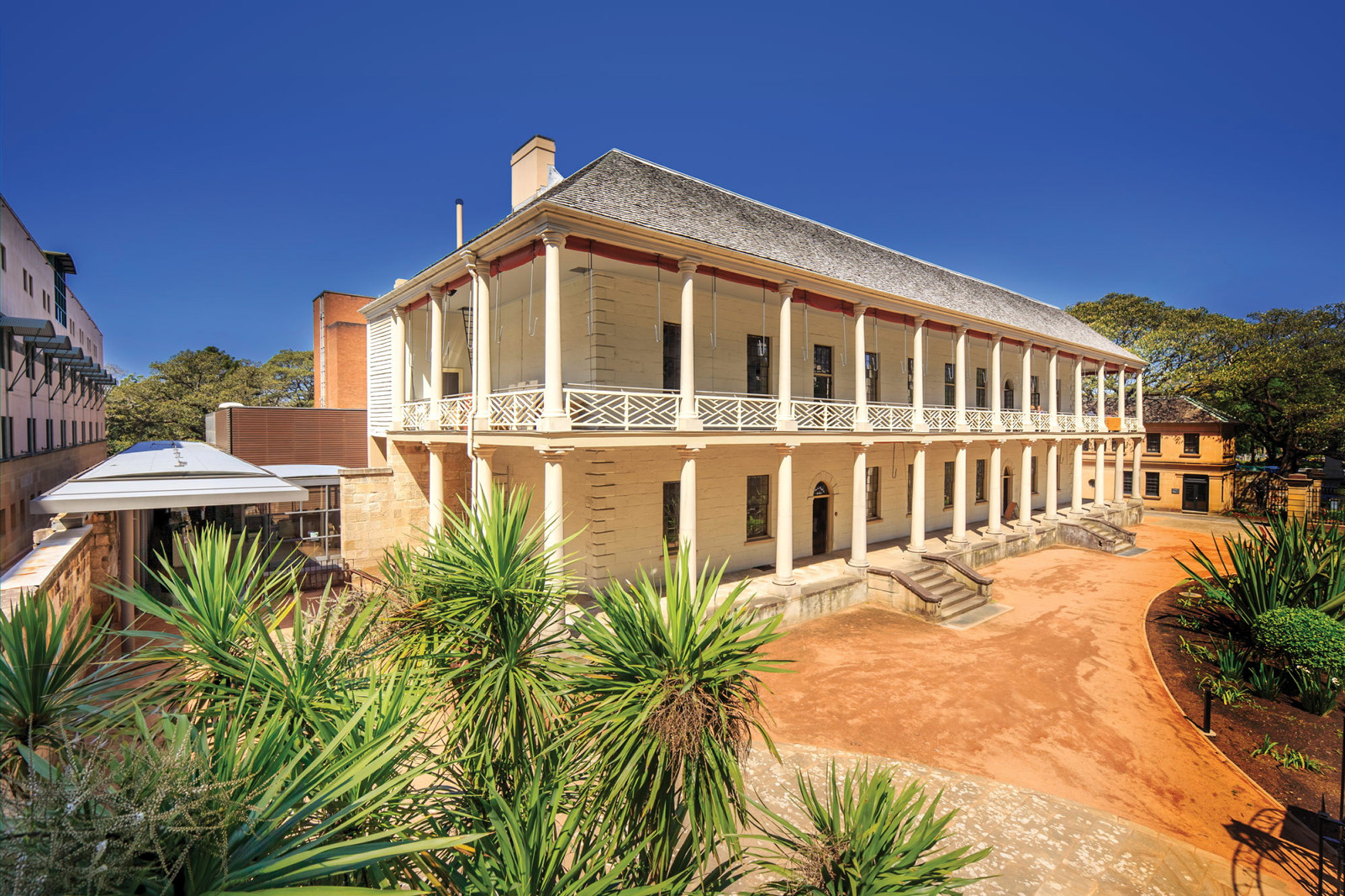What was the ‘Rum’ Hospital?
Between 1816 and 1848, the General Hospital on Sydney’s Macquarie Street, provided medical care for the colony’s convict workforce.
The hospital was Lachlan Macquarie’s first public works project as Governor of New South Wales, and having been denied the necessary finances to build it, he struck up a deal with merchants Alexander Riley and Garnham Blaxcell, and colonial surgeon D’Arcy Wentworth. In exchange for a monopoly on the importation of 45,000 gallons of rum (spirits) to the colony, these contractors built Macquarie’s hospital, which as a result, became popularly known as the ‘Rum Hospital’. The hospital south wing is now known as The Mint, and the north wing is NSW Parliament House.
The central wing (demolished in 1879) accommodated the convict patients, while the north and south wings accommodated the Principal Surgeon and Assistant Surgeons respectively. For the convicts who occupied the wards, and who staffed the hospital, the institution soon became known as the ‘Sidney Slaughter House’, since brutal bloodletting and the administration of often toxic concoctions were the standard treatments for a range of ailments.
The substantial hospital buildings in the centre of Sydney soon attracted interest for other government uses. By 1842 the north wing was completely turned over for use by the NSW Legislative Council. In 1854 after convict transportation to NSW had ended and gold had been discovered in NSW, the south wing was converted into the first overseas branch of the Royal Mint in London.
In 2016 Sydney Living Museums (Museums of History NSW) celebrated the bicentenary of the opening of the Rum Hospital in 1816 with a series of special events, displays and online stories that highlight the important role the hospital and its staff played in Australia’s convict and medical history.
The Rum Hospital symposium: videos
19:59
28:46
Presented as part of GA200+
Published on
Related
Browse all
Unexpected views
Over the decades, photographers have captured unexpected glimpses of the Mint’s history

Museum stories
The changing face of the Mint
As photographers documented the evolving face of the Mint, they recorded changes to the site and streetscape

